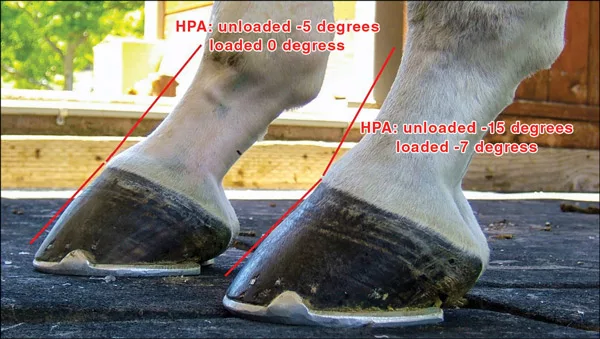American Farriers Journal
American Farriers Journal is the “hands-on” magazine for professional farriers, equine veterinarians and horse care product and service buyers.

Range of extension of the pastern in the square standing horse is 5 to 10 degrees in the front and 5 degrees in the hind.
Using an optimal balanced foot will have a slightly negative HPA of 5 to 10 degrees, which extends to a 0-degree axis when the opposite foot is non-weight bearing.
A 2-degree palmar angle change will move the hoof pastern axis (HPA)
5 degrees.
Do not lower the foot on an overextended or positive HPA; instead adjust
the mechanics of the foot or shoeing and re-evaluate at the next shoeing.
Before making a palmar angle adjustment, first get the foot into equilibrium with ventral depth, palmarodorsal and mediolateral balance.
When restoring feet to the correct HPA, the angle difference between the dorsal bone angle and the proximal hoof angle from a lateral radiograph can be used to enhance correction, for every 5 degrees or increment of add 2 degrees to the palmar angle.
Don’t inadvertently add wedges in therapeutic cases, get the HPA.
As footcare professionals know, the angle formed by the bony column of the phalanges with the hoof wall is referred to as the hoof-pastern axis (HPA), and is considered ideal when the dorsal surface of the hoof is parallel to the alignment of the digital bones (Figure 1).1
The concept of an optimal HPA has a long history…